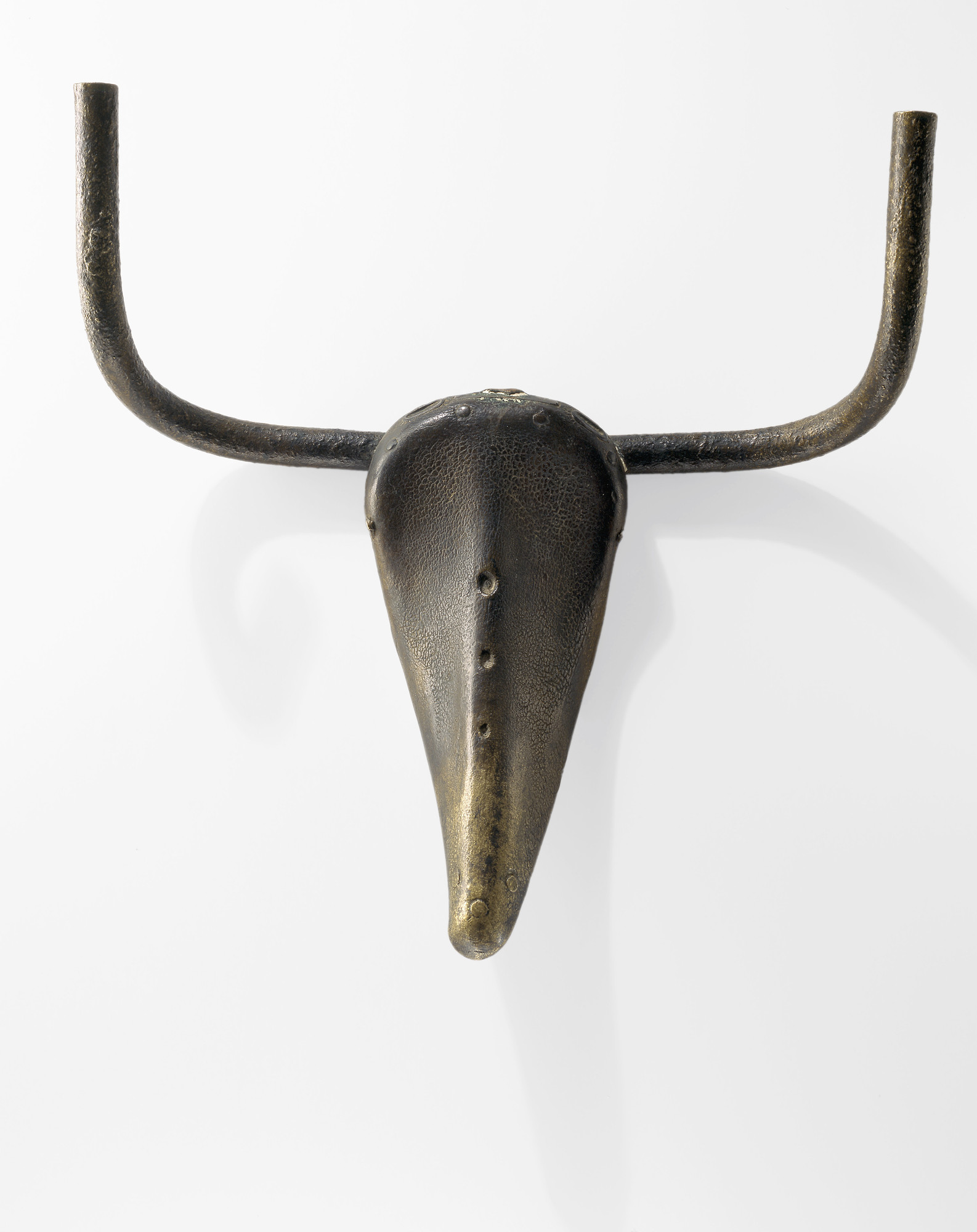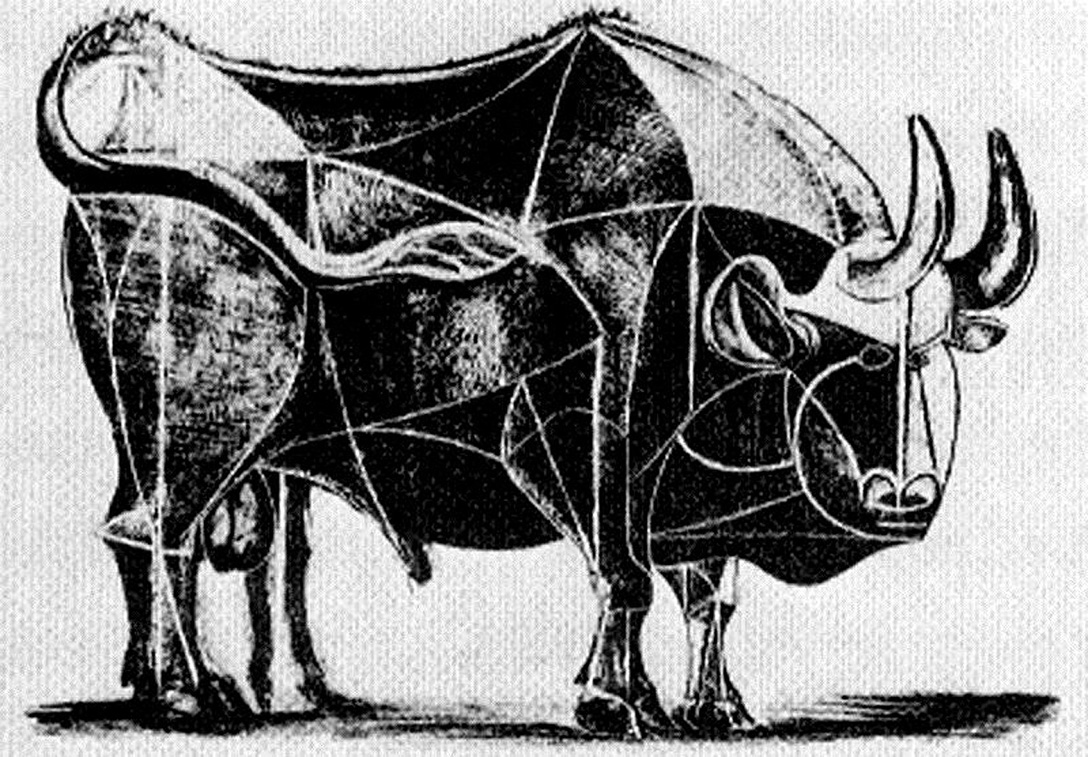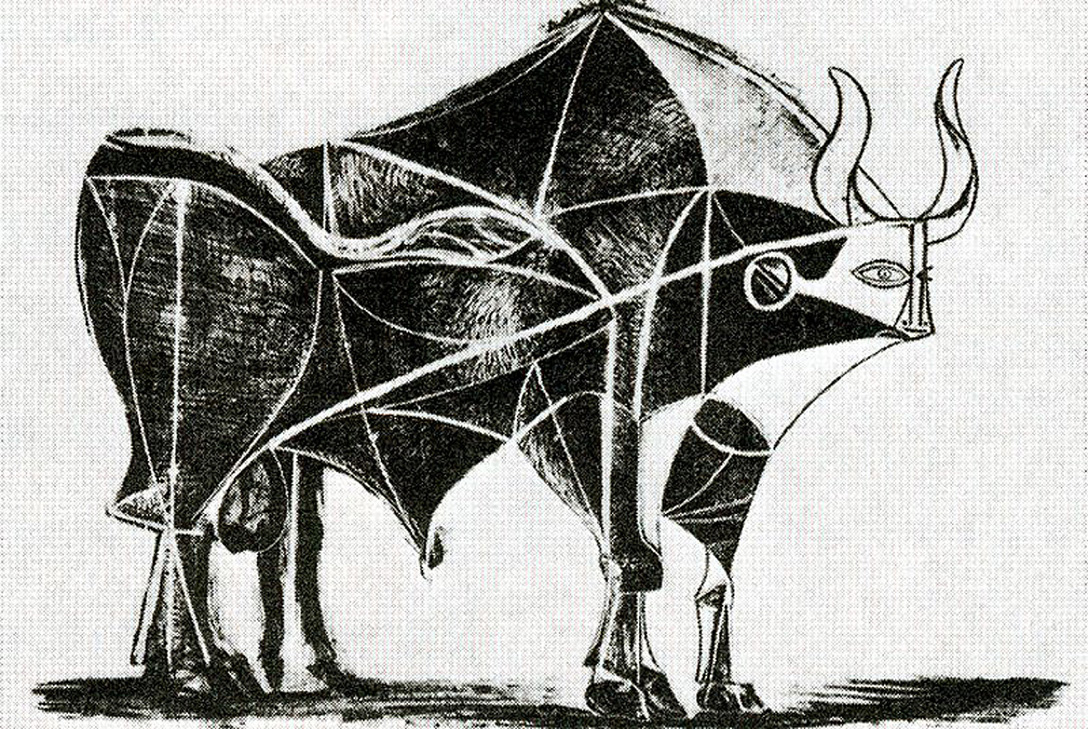New exhibition in Pasadena peeks into Picasso's 'States of Mind' Los Angeles Times
Le Taureau is a series of lithographs by Pablo Picasso made with the assistance of Fernand Mourlot from December 1945 to January 1946. [1] In his memoir Mourlot recalled that "in order to achieve his pure and linear rendering of the bull, he had to pass through all of the intermediary stages". [1]

The Bull by Pablo Picasso
The Bull Fight. Pablo Picasso uses a tangle of black lines to describe the violent energy of a bullfight. A brown bull is flanked by a rearing stallion on the left and an angular, green matador at right. The artist admired the power and force of the bull, seeing it as a metaphor for the animalistic, sexual passions of the unconscious mind.

Picasso Cutting the bull in printmaking Minneapolis Institute of Art
Pablo Picasso, "The Bull", lithographs, 1945 Picasso had his favorite animals. His love to pigeons was well known - it even became an international symbol of peace in a post-war world. Picasso also loved bulls - he was a frequent guest to Spanish corridas.

The Bull by Pablo Picasso
Symbolism in Art: The Bull in Picasso's Guernica By Kitty Jackson - Thursday, September 5, 2019 Picasso was once quoted as saying 'If all the ways I have been along were marked on a map and joined with a line, it might represent a minotaur'.

Picasso Painted Guitars… and Some Bulls. — 99 Decisions
Details Artist Name: Pablo Picasso (Spanish, 1881-1973) Title: The Bull Date: December 5, 1945 Medium: Lithograph on paper Edition: 1st state, 1 of 18 artist reserved proofs Dimensions: 11-5/8 x 17 in. (29.5 x 43.2 cm) Credit Line: Norton Simon Art Foundation Accession Number: M.1977.08.3.01.G

Pablo Picasso. Bull’s Head. 1942 MoMA
Picasso's father took him to see his first bullfight in 1889, when he was only nine years old. The spectacle so impressed him that he made it the subject of his very first painting that same year. In 1934 Picasso again took up the subject in an extensive series of drawings, prints, and paintings in which the choreography of the corrida became a.

Bull (plate IV) Pablo Picasso encyclopedia of visual arts
The Meaning of the Bull Pablo Picasso produced several iterations of bulls, including the lithographic Bull series, but also Picasso's bull painting, for example, Bullfight: Death of a Toreador (1933), all of which are exemplary of his interest and love of bulls. But, why did Picasso depict bulls, and what did they mean?

The Bull by Pablo Picasso Picasso drawing, Picasso, Pablo picasso
Given Picasso always identified himself as the bull, one interpretation is him facing his impending death as a bull faces the matador. Richardson, 93, is the author of three volumes of Picasso's.

Bull (plate VII), 1945 Pablo Picasso
Like the jockeys who participate in the Pacu Jawi, Picasso saw the bull as a vehicle for advancing his sense of self and asserting his hefty machismo. "If all the ways I have been along",.

The Bull by Pablo Picasso
The Bull January 17, 1946 Pablo Picasso Spanish, 1881-1973 Discover More Top 10 Status Currently Off View Department Prints and Drawings Artist Pablo Picasso Title The Bull Place Spain (Artist's nationality:) Date Made 1946 Medium Lithograph in black on ivory wove paper Dimensions

The Bull by Pablo Picasso A Lesson in Abstraction Draw Paint Academy
Collection Activities The close relationship between the world of bullfighting and Picasso's oeuvre is unquestionable. From his childhood days in Málaga, where his father often took him to the bullring, he was greatly fascinated by the national sport.

Bull (plate V) Pablo Picasso encyclopedia of visual arts
Pablo Picasso The Bull (Le Taureau), state XIV 1946. This series vividly demonstrates the kind of experimentation with lithography that Picasso undertook at the Mourlot print workshop in Paris after World War II. Themes, March 28-September 30, 2010. Pablo Picasso. The Bull (Le Taureau), state XIV. 1946.

The Bull, 1945 1946 • Pablo Picassos The Bull is a series of eleven lithographs created from
61 Views "The Bull" is a series of eleven lithographs created by Pablo Picasso in 1945. The series depicts a bull in various forms and positions, showcasing Picasso's mastery of line, form, and movement. This series is considered one of Picasso's most important works of the 1940s and is considered a masterpiece of modern art.

The Bull by Pablo Picasso
Pablo Picasso Original Title: Le Taureau Date: 1946 Style: Cubism Period: Neoclassicist & Surrealist Period Series: Eleven developments of a lithograph Theme: Bull Genre: animal painting Media: lithography, paper Location: Museum of Modern Art (MoMA), New York City, NY, US Dimensions: 29.2 x 39.5 cm Article References

Picasso Bulls Sheelagh Carpendale
Picasso created Bull during a period in which he was occupied with making sculptures out of thin planes, both of wood and sheet metal. Bull references painting in its near flatness and, more directly, in its incorporation of a painting stretcher to frame the bull's face.

Pablo Picasso, Le Taureau (The Bull),1945 ピカソの絵画, モダンアート, 現代アート
Pablo Picasso's The Bull is a series of eleven lithographs created in 1945. It depicts the bull at various stages of abstraction, starting with a fairly realistic depiction and ending with nothing but a few lines. Pablo Picasso, The Bull, 1945